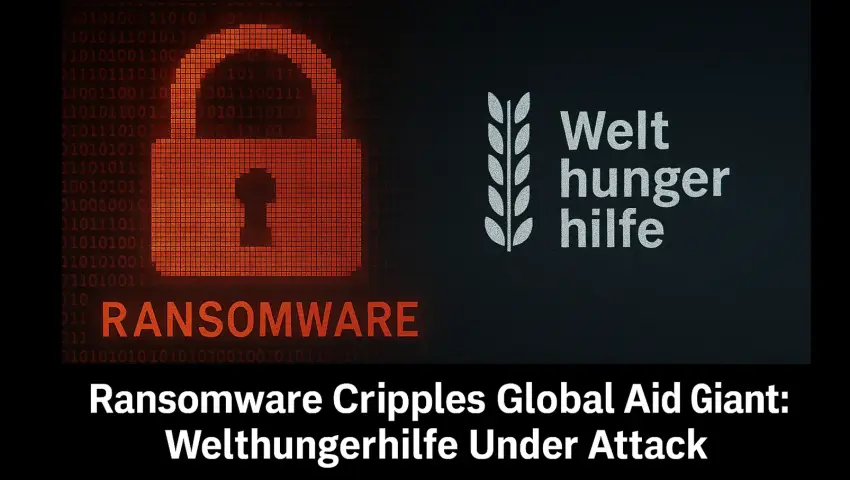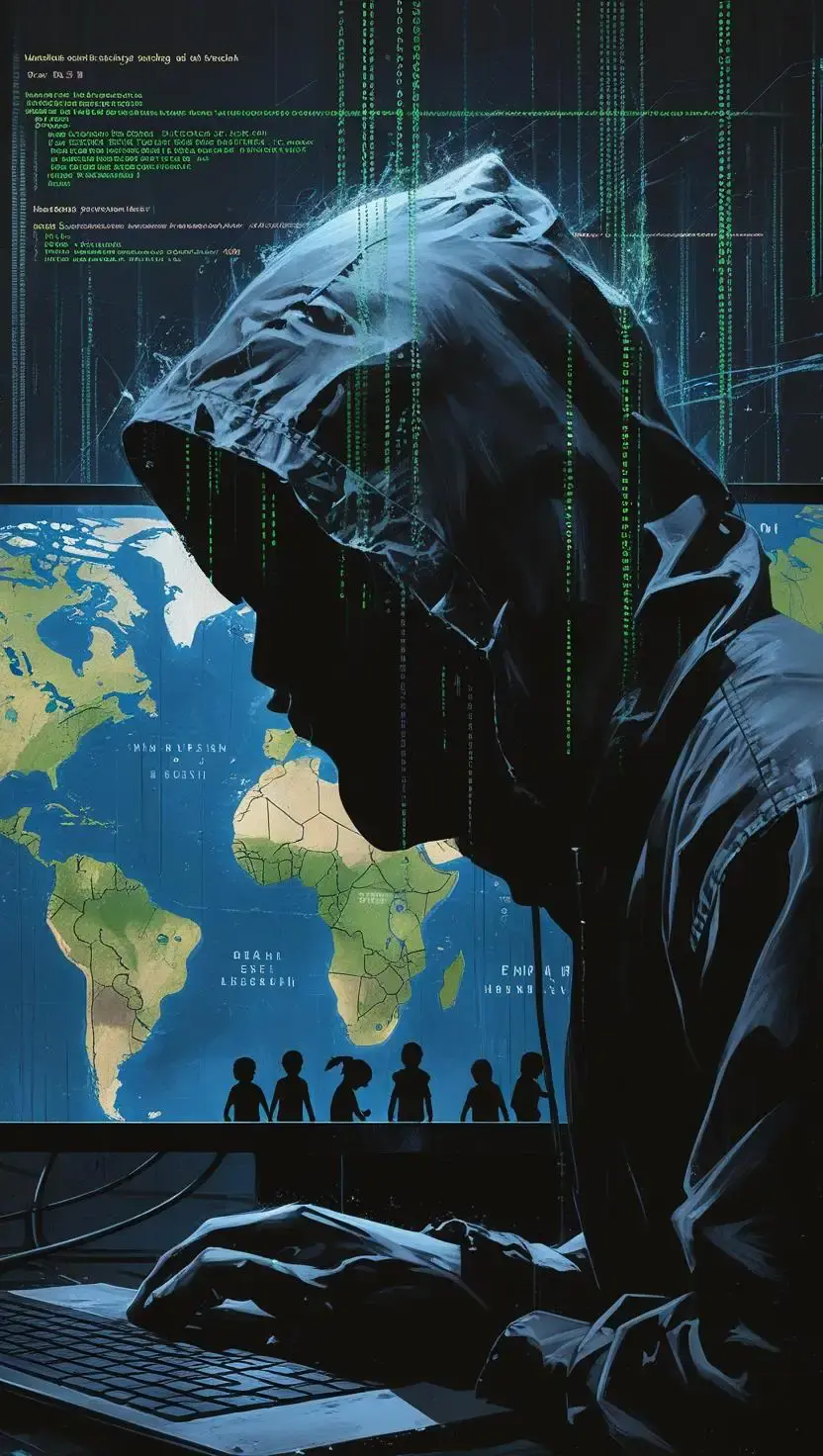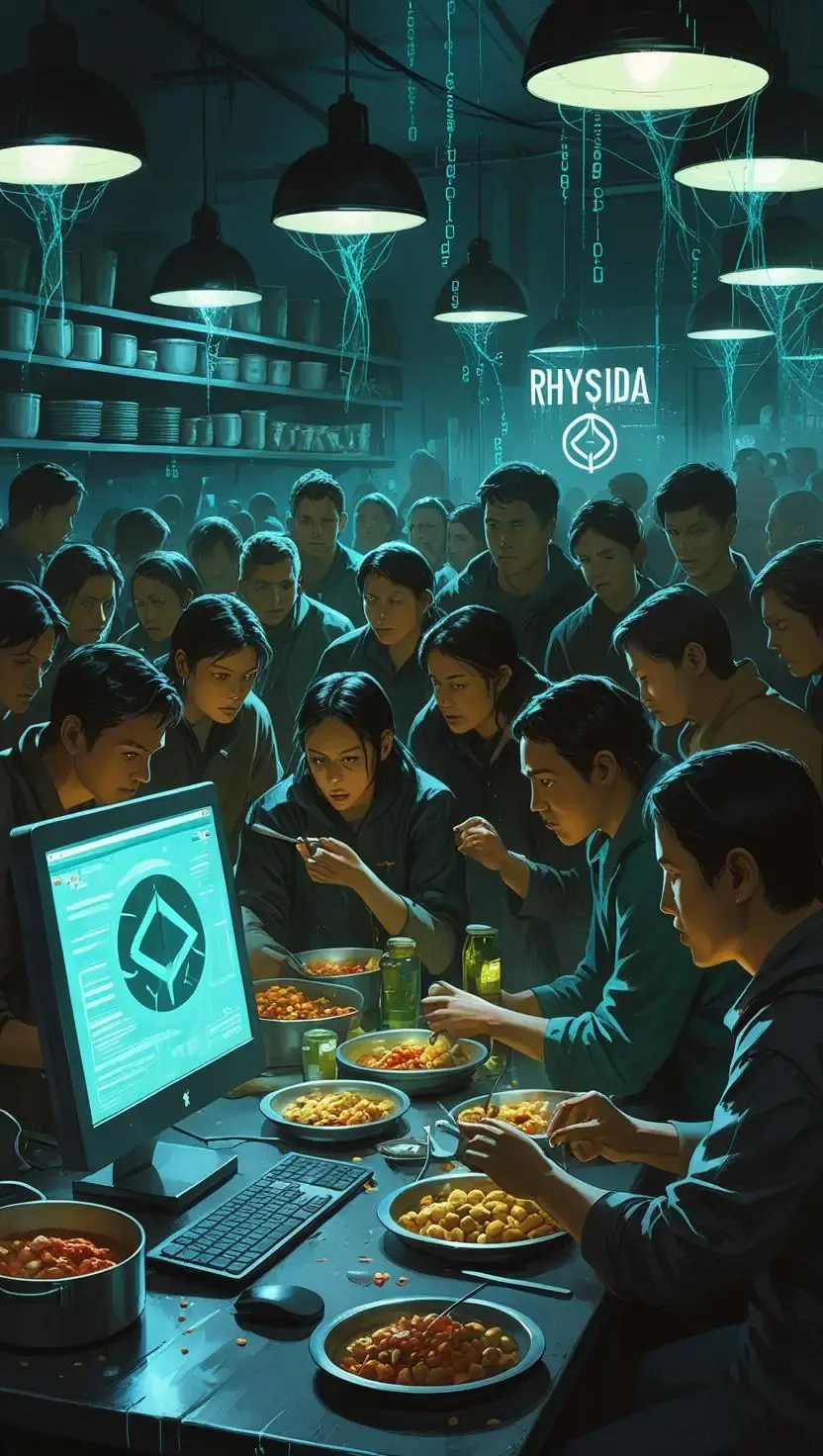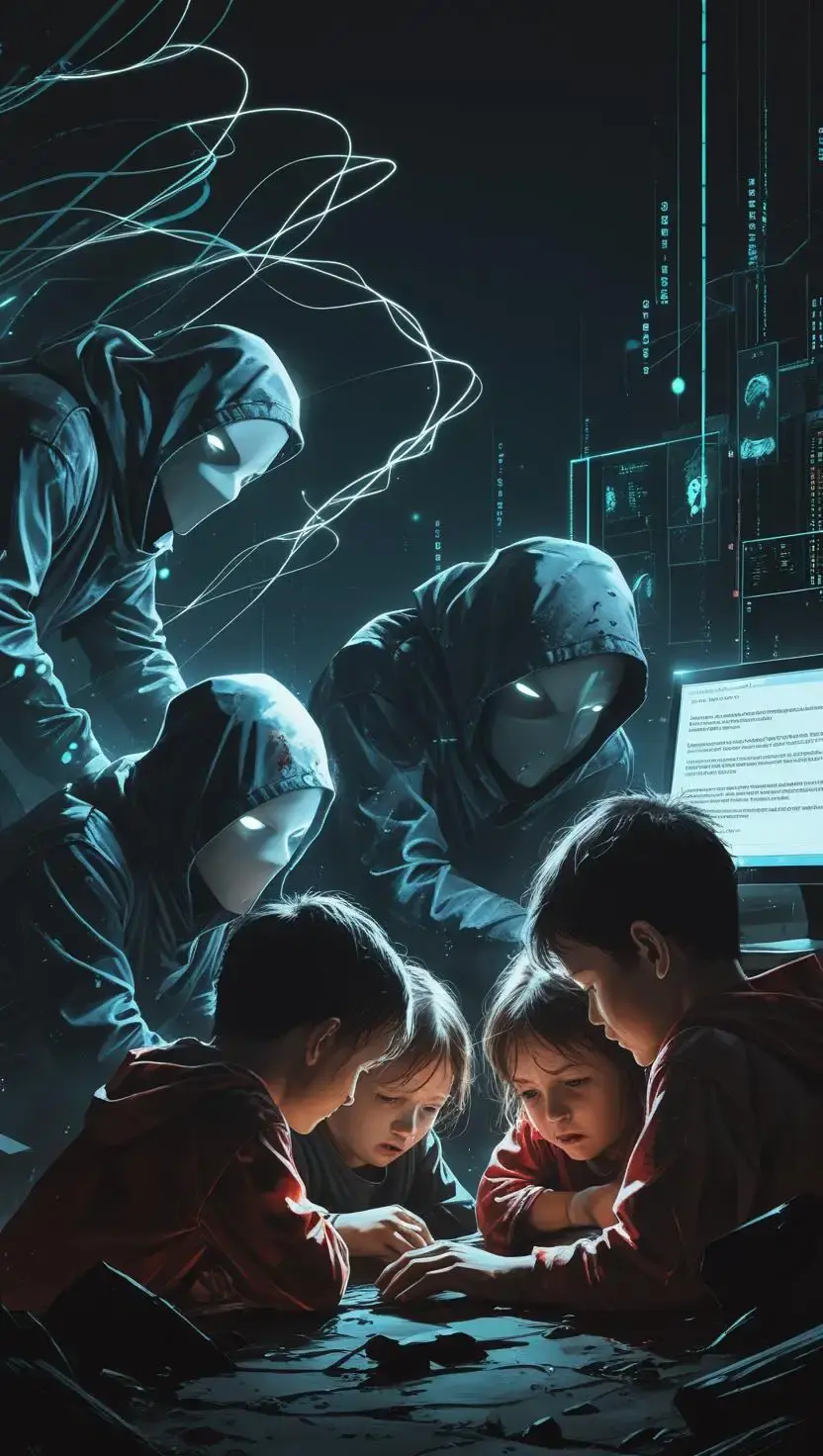
The Stolen Harvest: When Cybercrime Costs Real Lives
Shadows on the Aid Frontier

In the early hours of June 29, 2025, cyber silence was broken by a chilling revelation: Welthungerhilfe, one of the world’s largest and most respected humanitarian aid organizations, had been hit by a ruthless ransomware attack. The claim was made not through mainstream media, but from the darkest corners of the internet — on the encrypted leak site of the Rhysida ransomware group.
For most of the public, “Welthungerhilfe” evokes images of relief workers braving war zones, drought-stricken villages, and disaster-struck regions. Founded in 1962 and headquartered in Bonn, Germany, the organization has a singular mission: to end hunger and poverty through sustainable aid. It operates in over 35 countries, partnering with local communities and governments, often under the radar but always on the frontlines of human suffering.
To attack such an institution is not just a technical breach — it’s a moral assault.
The adversary? Rhysida, a name that now sends ripples of anxiety through IT departments and cybersecurity analysts worldwide. Believed to be a sophisticated and financially motivated group, Rhysida has built its reputation on double-extortion tactics: steal the data, encrypt the systems, and then issue a grim ultimatum — pay, or the data goes public. Their victims range from hospitals to municipal governments. Now, they’ve made a chilling leap: targeting an entity built entirely on generosity and trust.
Welthungerhilfe confirmed the attack mere hours after Rhysida’s disclosure. A statement from its crisis response team revealed that IT systems had been compromised but were quickly contained. Still, the damage may already be done. Donor information, project documents, and sensitive communications — all may now be in criminal hands.
Anatomy of the Breach
For an organization rooted in crisis response, Welthungerhilfe now found itself on the other end — not the responder, but the victim. Here’s how the chaos unfolded:
Timeline of the Attack
June 28, 2025 (Evening) – Suspicious network activity reportedly begins inside Welthungerhilfe’s infrastructure. Initial signs of compromise—later identified as lateral movement—are detected by internal monitoring systems.
June 29, 2025, 05:50 AM (UTC+3) – Cyber threat intel firm ThreatMon publicly reports the breach, citing Rhysida’s leak site as the source. The listing includes a sample of alleged stolen files and a countdown timer—pressure tactics designed to accelerate ransom negotiations.
Hours Later – Welthungerhilfe releases an official statement acknowledging the attack. While they confirm “prompt containment,” the organization notes that an investigation into the extent of the breach is ongoing.

Attack Techniques: Rhysida’s Modus Operandi
Rhysida is not your average ransomware gang. Security analysts have tracked their evolution and consistently flagged their operations as well-coordinated and precise. Here’s what likely happened:
Initial Access – Often obtained through phishing emails carrying malicious documents. In other campaigns, they’ve exploited unpatched VPN appliances and exposed RDP (Remote Desktop Protocol) ports.
Lateral Movement – Once inside, Rhysida operators reportedly use tools like Cobalt Strike, Mimikatz, and native Windows commands (e.g., PsExec, WMI) to escalate privileges and move across networks unnoticed.
Data Exfiltration – Before deploying ransomware, the group steals sensitive data using encrypted tunnels (e.g., Rclone over HTTPS or SFTP), ensuring they have leverage in case ransom demands are ignored.
Payload Deployment – A customized Rhysida ransomware binary is then pushed across systems, encrypting files and leaving behind ransom notes that read more like veiled threats than negotiations.
Leak Site Exposure – Victims who don’t comply are “named and shamed” on Rhysida’s darknet blog, alongside samples of stolen data.
Target Shift: Why an NGO?
This is not a random smash-and-grab. Analysts believe threat actors are intentionally expanding their focus to non-governmental organizations, which often lack robust security budgets yet hold sensitive donor and project data — a soft but politically symbolic target.
Aftershocks and Reckonings
The cyberattack on Welthungerhilfe did more than encrypt servers—it shattered a sense of invincibility within the humanitarian world. For decades, NGOs have operated with the tacit hope that their mission might shield them from the worst of cyber aggression. That illusion has now been conclusively broken.
In targeting an organization whose purpose is to alleviate suffering, the Rhysida group has signaled a cold truth: there are no sanctuaries in cyberspace. The digital frontlines do not distinguish between corporations and charities, profit and purpose. All are viable targets in the eyes of ransomware operators who view data not for its ethical worth, but for its leverage.
What’s at Stake?
For Welthungerhilfe, the immediate concern is recovery—technical, operational, reputational. While the organization has not disclosed a ransom amount or confirmed the extent of data loss, cybersecurity analysts estimate that ransomware incidents of this scale typically cost between $1.5 million and $4 million in direct and indirect damages.
But what does that number really mean?
According to Welthungerhilfe’s own impact data, the organization supported 16.4 million people in 2023 across 36 countries. Based on historical funding and reach, it’s estimated that every $100–$250 can provide a malnourished child with life-saving food, clean water, and medical care for several months. That means the money lost in this attack could have supported between 6,000 and 40,000 vulnerable children—children who now may face hunger, illness, or worse.
The reputational damage is equally sobering. Even though Welthungerhilfe has communicated transparently and reassured supporters that no personal data appears compromised, the mere association with a breach can erode trust. Donors may hesitate. Partners may scrutinize. And beneficiaries may suffer delays in aid delivery.
This isn’t just a wake-up call for humanitarian groups. It’s a clarion call for the entire ecosystem—governments, cybersecurity firms, and philanthropic funders—to step up and help fortify the defenders of humanity.
Digital vulnerability should not be the price of moral courage.
As Welthungerhilfe begins its road to recovery, its story becomes more than a cautionary tale. It’s a symbol of a new era, where even the guardians of the most vulnerable must themselves be guarded, not just with firewalls and encryption, but with collective will and shared responsibility.
The Defense We Needed — How Cy-Napea® Could Have Stopped the Breach
In the aftermath of the Welthungerhilfe ransomware attack, one question looms large: Could this have been prevented? The answer, increasingly, is yes.

Had the organization deployed a cyber resilience platform like Cy-Napea®, the outcome might have been dramatically different. Built on a foundation of proactive defense, Cy-Napea® is designed to detect, neutralize, and recover from ransomware threats before they can cause harm. Its architecture reflects the most advanced strategies in modern cybersecurity.
How Cy-Napea® Could Have Prevented the Attack
Real-Time Behavioral Detection
Cy-Napea® continuously monitors system behavior for anomalies—such as rapid file encryption or unauthorized privilege escalation. This allows it to detect ransomware activity even if the malware is previously unknown or fileless.Self-Defense Architecture
Unlike traditional antivirus tools, Cy-Napea® is engineered to protect itself. Attackers cannot disable its core processes or tamper with its backup infrastructure, even if they gain administrative access.Immutable, Air-Gapped Backups
All backups are stored in a tamper-proof, isolated environment. Even if production systems are compromised, Cy-Napea® ensures that clean data can be restored instantly—without paying a ransom.Zero-Day Threat Interception
Using heuristic analysis and AI-driven threat modeling, Cy-Napea® can block ransomware variants that haven’t yet been cataloged by global threat databases. This is especially critical against groups like Rhysida, who often deploy custom payloads.Automated Recovery and Forensics
In the event of an attack, Cy-Napea® can automatically isolate infected endpoints, roll back encrypted files, and generate forensic reports to support legal and regulatory response.
Why It Matters
The attack on Welthungerhilfe wasn’t just a technical failure—it was a humanitarian disruption. With estimated damages ranging from $1.5 million to $4 million, the financial loss alone could have supported 6,000 to 40,000 malnourished children with food, water, and medical care. That’s the real cost of inadequate cyber defense.
Cy-Napea® represents more than just software. It’s a shield for those who shield others. In a world where even compassion is under siege, resilience must be built into every layer of mission-driven work.
Disclosure:
The estimated financial losses ($1.5M–$4M) and the number of children potentially impacted (6,000–40,000) are based on publicly available industry benchmarks and Welthungerhilfe’s historical cost-per-beneficiary data. These figures are illustrative and not officially confirmed by the organization.
Sources:




